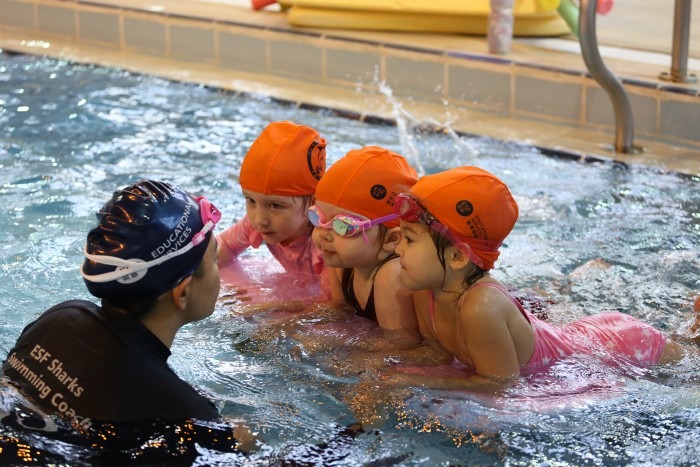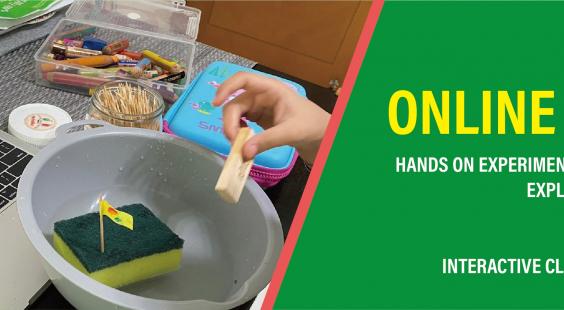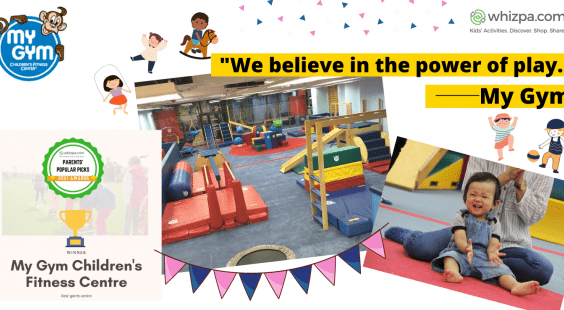
Sharing the Joys of Swimming with Children
Why swimming?
As with other sports, swimming can help improve a child’s cardiovascular fitness and strengthen their muscles. However, swimming puts less strain on their limbs compared to land-based exercises. This is because when people are in water, the water supports their bodyweight. When they move their limbs, their buoyancy will relieve most of the impact on their joints. In the long run, swimming can train the body without damaging the joints.
In addition to providing kids with good exercise, swimming can also give kids security. Drowning is a significant danger for children in many countries. Although there is not a lot of data available on the incidences of drowning in Hong Kong, the risk of drowning here is no less than in other countries given the presence of harbours and waterfronts all around the territory, as well as swimming pools in many residential and recreational areas. Giving children swimming lessons allows them to get used to being in water. If they accidentally fall into the water, they can at least keep calm and stay afloat until help arrives.
What is the best age for learning how to swim?
By the time they are about four or five years old, children’s arms and legs will have developed enough to allow them to learn how to swim properly. The American Academy of Pediatrics has recommended that for the sake of safety, children should learn swimming at the age of four. In addition, research has shown that 5 year olds can learn how to swim in a fewer number of lessons and at a faster pace than younger kids.
For many years, the American Academy of Pediatrics did not recommend swimming lessons for infants under the age of 4 years old because it was felt that children of that age did not yet have limbs developed enough to fully cope with the movements required of swimming. As such, swimming lessons were not felt to be very effective. However, this view has been changing due to an increase in the number of children drowning, and also recent scientific research showing that incidences of drowning are reduced when children aged 1-4 years old are given swimming lessons. Although the younger children’s rate of learning will be slower, swimming lessons can nevertheless decrease their chances of drowning. The American Academy of Pediatrics has already updated its recommendations for children learning to swim a few years ago, and has adopted a more open attitude towards babies’ swim classes. There are now already many swimming programmes targeted at kids four and under. However, the American Academy of Pediatrics advises parents to take into account their baby's ability and health before enrolling them in a swimming class.
Swimming class for different ages
As two to four year olds are not really physically developed enough to swim effectively on their own, if they are taking a swimming class they should be equipped with floating devices to help them overcome any fear of water. Whizpa suggests that parents choose swimming classes that allow kids to start learning to swim with simple movements and games in the water. Parents can also consider choosing small classes or even one-on-one swimming lessons that establish mutual trust between a child and their teacher. This can help foster a child’s sense of security in the water, and prepare them for more formal swim classes after the age of four.
Kids aged four and above can take part in more formal swim training. If they already received some initial training before the age of four and are not afraid of the water, they can start to learn different skills – for example, floating on their own, holding their breath under water, and coordinating the movements of their arms and legs. After that, they can learn how to swim on their own, and even different strokes. If a strong interest in swimming has been fostered in children, they can be encouraged to challenge themselves by training for swimming competitions to improve their speed and endurance. For children who are not too interested in swimming, learning the basics of swimming is already enough to address everyday exercise and safety needs.
Safety tips of choosing a swimming class
In addition to considering the parameters mentioned above, Whizpa suggests that when parents choose a swimming school or instructor they should also take into account the instructors’ approach to safeguarding children’s safety in the water. For example, the flotation devices and aids that they use should not be inflatable ones like inflatable rings and arm bands since inflatable floaters run the risk of being punctured. Also, the swimming instructors should have Cardiopulmonary Resuscitation (CPR) and other first aid knowledge to deal with emergencies.
Note to Parents: Just because a child has taken swimming lessons does not mean that parents no longer need to worry about protecting them from the risks of drowning. A child’s swimming ability, the swimming aids that they use and so on cannot replace parental supervision. Parents should never let children swim alone, and should stay within the distance of an arm’s length of their children so that they are ready to assist their child when they encounter difficulties.
Whizpa.com has listed 144 learning centres which offer swimming classes, for example, ESF Sports, Win Tin Swimming Club, Stanford Swim School, Lai Tsun Swimming Society, Swim-Heart Swimming Club, etc.
After your child has tried out a swimming class, please remember to leave a review on Whizpa to let other parents learn more about the characteristics of the course. Your comments are the driving force behind the progress of Hong Kong's education sector!








